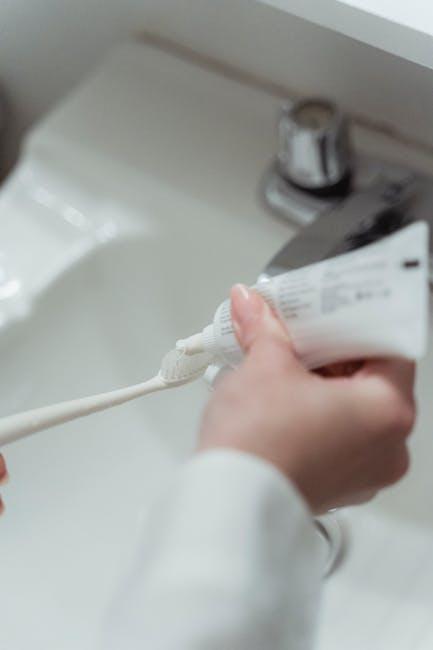Fluoride Ban Could Create Cavities For 1 Of Every 3 U.S. Kids – U.S. News & World Report
Recent discussions and legislative moves regarding fluoride bans in public water and dental products pose a significant risk to children’s oral health in the United States. Experts warn that a ban on fluoride could potentially increase the incidence of cavities, threatening the dental well-being of nearly one-third of American children. Let’s explore exactly how fluoride impacts dental health, the dangers of a possible ban, and meaningful steps parents can take to protect their children.
Understanding Fluoride: Why It’s Essential for Children’s Dental Health
Fluoride is a naturally occurring mineral celebrated for its cavity-preventing properties. It works by:
- Strengthening tooth enamel, making teeth more resistant to acid attacks from bacteria in the mouth.
- Reversing early signs of tooth decay by remineralizing areas weakened by acids.
- Inhibiting the growth of harmful oral bacteria that cause cavities.
Since the mid-20th century, community water fluoridation and fluoride-containing dental products like toothpaste and mouth rinses have been vital tools in combating tooth decay nationwide.
Fluoride in Public Water Systems
Water fluoridation is widely recognized by public health organizations, including the Centers for Disease Control and Prevention (CDC), as one of the top public health achievements of the 20th century. Roughly 73% of the U.S. population with access to community water systems receive fluoridated water at recommended levels.
The Fluoride Ban Debate: Risks and Ramifications
Recently, some states and local governments have proposed or enacted bans on water fluoridation or fluoride-containing products. While opposition is often based on concerns about overexposure, safety, or personal choice, dental experts warn of the unintended consequences such bans could have—especially for children.
How a Fluoride Ban Could Lead to More Cavities
According to recent studies and expert estimates:
- Up to 33% of U.S. children could develop cavities if fluoride is removed from community water or dental products.
- The risk of early childhood caries (tooth decay in young children) could rise sharply, leading to increased dental pain, infections, and costly treatments.
- Cavities are strongly linked with poor nutrition, speech problems, and school absences due to dental discomfort.
Table: Potential Impact of Fluoride Ban On U.S. Children’s Dental Health
| Factor | With Fluoride | Without Fluoride |
|---|---|---|
| Children’s Cavity Rate | ~20% | Up to 33% |
| Dental Treatment Costs | Lower | Significantly Higher |
| Overall Oral Health | Improved | Declined |
| School Absences (Dental-related) | Reduced | Increased |
Benefits of Fluoride for Children and Families
Fluoride offers numerous benefits beyond cavity prevention. Understanding these can help parents make informed decisions about oral health:
- Cost-Effective Protection: Fluoridated water reduces the need for expensive dental procedures, saving families hundreds of dollars.
- Equitable Health Impact: It protects children regardless of socioeconomic status or access to regular dental care.
- Safety: When used appropriately at recommended levels, fluoride is safe for children of all ages.
- Long-Term Oral Health: Early protection helps reduce chronic dental issues in adolescence and adulthood.
Scientific Consensus
Major dental and health organizations, including the American Dental Association (ADA), CDC, and World Health Organization (WHO), continue to endorse fluoride use as a safe and effective measure to fight tooth decay.
Practical Tips to Protect Your Child’s Dental Health Amid Controversy
If your community is considering or enacting fluoride bans, you can still take proactive steps to promote your child’s oral health:
- Use Fluoride Toothpaste: Ensure your child brushes twice daily with a pea-sized amount of fluoride toothpaste.
- Regular Dental Check-Ups: Schedule professional cleanings and dental exams at least every six months.
- Limit Sugary Foods and Drinks: Reduce your child’s intake of sodas, candies, and snacks that fuel cavity-causing bacteria.
- Consider Fluoride Supplements: Talk to your dentist about fluoride drops or tablets if your water supply lacks it.
- Promote Healthy Habits: Teach proper brushing and flossing techniques early to build lifelong habits.
First-Hand Experience: A Parent’s Perspective
Jessica M., a mother from Portland, Oregon, shared her story about living in a community where fluoride was recently removed from public water:
“After the fluoride was removed, my son started getting more cavities than ever before. He had to have several fillings by age 6, and it’s been stressful and costly. We switched to fluoride toothpaste and talk regularly with our dentist, but I worry about the long-term effects.”
This anecdote underscores the real-world impact that fluoride reduction or bans can have on families nationwide.
Case Study: Cities That Removed Fluoride and Their Outcomes
Several U.S. cities that stopped water fluoridation in recent decades witnessed notable rises in childhood dental decay rates. For example:
- Portland, Oregon: After ceasing fluoridation in 2013, dental decay among children under 12 increased by about 20% within 5 years.
- Santa Fe, New Mexico: The city discontinued fluoride in 2011, reporting a steady climb in cavity-related dental visits among kids.
These case studies emphasize the link between fluoride presence and children’s oral health outcomes.
Conclusion: Fluoride’s Crucial Role in Preventing Childhood Cavities
The potential fluoride ban could have a dramatic effect on the dental health of American children, leading to a rise in cavities for one out of every three kids in the U.S. With strong scientific backing and decades of public health success, fluoride remains vital for combating tooth decay and promoting healthy smiles.
Parents, caregivers, and policymakers should carefully weigh the consequences of fluoridation bans versus the proven benefits of fluoride. By staying informed and adopting practical oral health strategies, families can help protect children from unnecessary dental pain and costly treatments—even amid ongoing debates.
Keep your child’s smile healthy with fluoride — because prevention is always better than treatment.


